Amazing discoveries and experiences await you in every issue of National Geographic magazine. The latest news in science, exploration, and culture will open your eyes to the world’s many wonders.
Ideas That ‘Surprise People’ • MEET ONE OF OUR ARTISTS
A SUMMER TRIP TO THE SHORE • LOOKING AT THE EARTH FROM EVERY POSSIBLE ANGLE In landlocked Hungary, an ersatz seashore vacation—to central Europe’s largest lake—is a tradition.
THE BACKSTORY • A PHOTOGRAPHER CAPTURES THE ESSENCE OF SUMMER IN THE TURQUOISE SHALLOWS OF HUNGARY’S LAKE BALATON.
The Dog (et al.) Days • IF WE LOVE DAYS THAT CELEBRATE SOMETHING, AND WE LOVE ANIMALS, NO WONDER WE LOVE DAYS THAT CELEBRATE ANIMALS.
NANO-SPECIAL DELIVERY • TESTS TRACK HOW PARTICLES MIGHT CONVEY A CANCER DRUG DIRECTLY TO A BRAIN TUMOR.
PATRÍCIA MEDICI • She champions a rare, imperiled species found only in South America.
DISAPPEARING SHARKS • The global abundance of ocean sharks and rays has declined by 71 percent since 1970, due to increased fishing and a lack of protections. Worldwide, sharks and rays are accidentally caught as bycatch, but in some places they’re targeted for their meat as well as their fins, gill plates, leather, and liver oil. An estimated 63 million to 273 million sharks were landed in the early 2000s, a peak of shark overfishing with lasting implications.
PLANET POSSIBLE • Suppose we clean up our messes and recycle what can be salvaged. Isn’t that how Mother Nature would want us to behave?
SPACE HURRICANE • Electron precipitation, auroral ovals, a glowing vortex 31,000 miles high and 1,700 miles across: That’s hurricane season at Earth’s north magnetic pole.
JAPAN’S CENTURIES-LONG PASSION FOR PAPER
TIDAL TECHNIQUE
STORIES FROM THE ROAD • MOM’S POETRY READINGS, DAD’S TRAVEL YARNS, DAUGHTER’S KEEN EYE, THE PHOTOGRAPHS IN A BOOK. WHO’S TO SAY WHAT SHAPES A CAREER?
ANCIENT ROME’S FIGHT CLUB • REAL GLADIATORS WEREN’T QUITE LIKE THOSE IN MOVIES. THEIR BATTLES WERE MORE ABOUT PUTTING ON A GOOD SHOW THAN KILLING ONE ANOTHER.
GLORY AND GORE • Gladiatorial venues were established in and around cities throughout the Roman Empire. Purpose-built amphitheaters dot the western provinces, while in the east older Greek theaters were converted to host bloody combat and animal displays. All played a prominent role in urban life.
BLOOD SPORT OF THE ANCIENTS • The Roman elite staged gladiatorial games both to display the empire’s dominance and to vie for power and influence.
CENTURIES OF SPECTACLE • Originally part of elite funerals, gladiatorial contests grew into extravagant events. Arenas and amphitheaters became integral to social and political life, with gladiators at center stage, employing distinct fighting styles and weapons to maximize the spectacle.
FIGHT SCHOOL • Across the empire, schools known as ludi trained prisoners of war, criminals, volunteers, and enslaved people to be professional gladiators. A recently discovered ludus at Carnuntum, a Roman city and military base in eastern Austria, reveals how gladiators lived and trained.
Perfectly Clear • Glass frogs, the tiny, translucent amphibians of Central and South America, are full of surprises.
America’s Hunger Crisis • THE PANDEMIC LEFT RECORD NUMBERS OF PEOPLE WITHOUT ENOUGH FOOD.FOR MANY, CHARITIES AND NEIGHBORS HAVE BECOME LIFELINES.
Where hunger spiked in the U.S. • When COVID-19 hit, many in the United States already on the verge of food insecurity were plunged into even deeper crisis. According to the hunger-relief organization Feeding America, an estimated 45 million people may have lacked sufficient access to food in 2020. The pandemic—erasing years of gains in the battle against hunger—appears to have caused food insecurity to...

 May 01 2025
May 01 2025
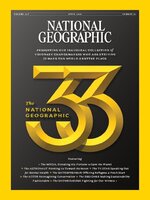 Apr 01 2025
Apr 01 2025
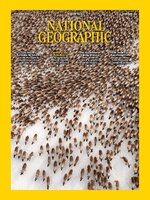 Mar 01 2025
Mar 01 2025
 Feb 01 2025
Feb 01 2025
 Jan 01 2025
Jan 01 2025
 Dec 01 2024
Dec 01 2024
 Nov 01 2024
Nov 01 2024
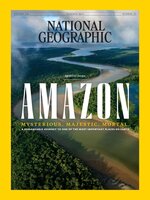 Oct 01 2024
Oct 01 2024
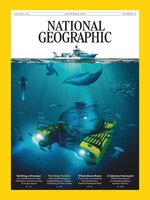 Sep 01 2024
Sep 01 2024
 Aug 01 2024
Aug 01 2024
 Jul 01 2024
Jul 01 2024
 Jun 01 2024
Jun 01 2024
 May 01 2024
May 01 2024
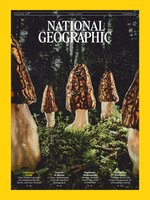 Apr 01 2024
Apr 01 2024
 Mar 01 2024
Mar 01 2024
 Feb 01 2024
Feb 01 2024
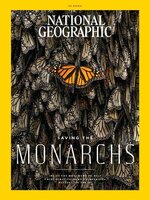 Jan 01 2024
Jan 01 2024
 Dec 01 2023
Dec 01 2023
 Nov 01 2023
Nov 01 2023
 Oct 01 2023
Oct 01 2023
 Sep 01 2023
Sep 01 2023
 Aug 01 2023
Aug 01 2023
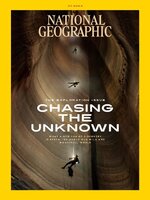 Jul 01 2023
Jul 01 2023
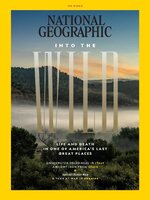 Jun 01 2023
Jun 01 2023